






| European Ground Squirrel (Spermophilus citellus (Linnaeus, 1766)) |







|
|
Scientific name: Spermophilus citellus (Linnaeus, 1766) Common name: European Ground Squirrel Other names: European Souslik French name: Souslik d'Europe, Spermophile d'Europe. Family: Sciuridae Size: 20 to 23 cm, 30cm including the short tail; 240 to 340 g. Biotope: Short-grass meadows and steppes, fallow land and embankments where the soil allows the digging of networks of galleries. Food: Vegetarian diet based on roots, leaves and herbs, supplemented by the consumption of some insects. Longevity : 6-7 years. Geographic area: Central and South-eastern Europe, on each side of the Carpathian mountains. Asia Minor. |
European Sousliks are small ground squirrels with a uniform grey-brown, slightly spotted coat. The eyes are quite large, the ears are small. The legs are equipped with sharp claws which allow European Ground Squirrels to dig galleries in the ground. European Ground Squirrels live in colonies in individual burrows. They hibernate between October and March after collecting provisions. There is usually a litter of three to eight young in April-May. Colonies have squirrels on the lookout standing on their back feet. They warn of dangers by whistling like marmots. The species is in decline due to changes in land use and in particular the reduction of grazed meadows. There is a less widespread related species, the Speckled Ground Squirrel (Spermophilus suslicus). It differs by numerous small, conspicuous creamy-white spots on its back. |
| [To know more about the European Ground Squirrel] [Next picture] [Top] |
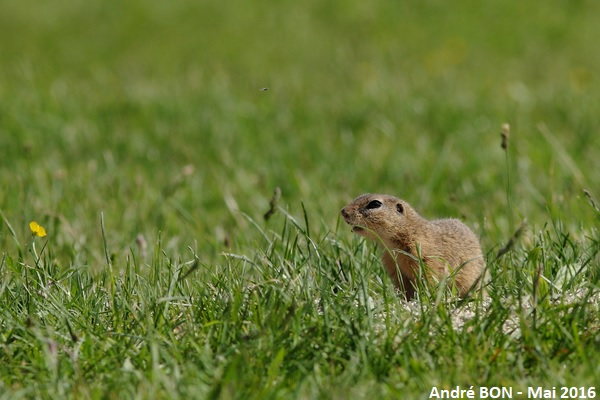
|
Our hike in the Tihany Peninsula started very well with the crossing of a small meadow inhabited by a colony of European Ground Squirrels. |
| [To know more about the European Ground Squirrel] [Next picture] [Previous picture] [Top] |
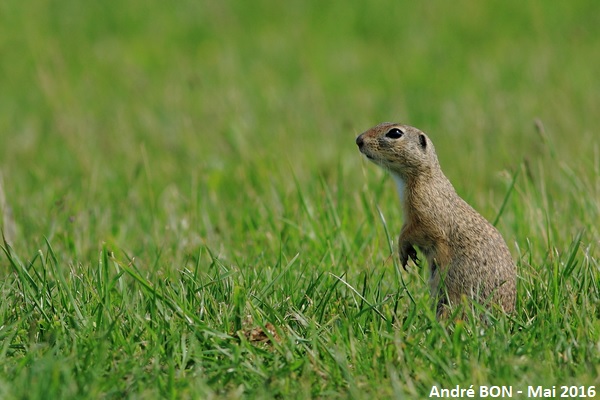
|
The European Ground Squirrels were very shy and quickly disappeared into their nearby burrows. |
| [To know more about the European Ground Squirrel] [Next picture] [Previous picture] [Top] |
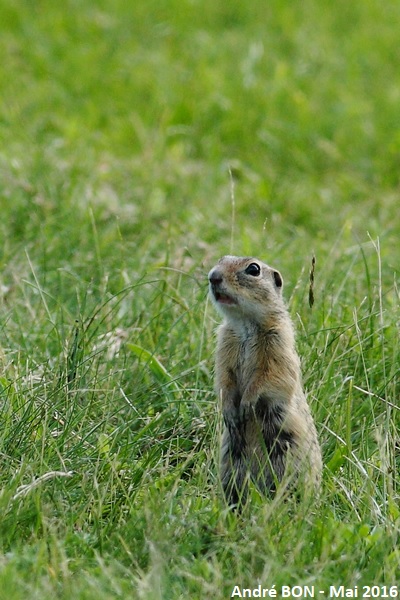
|
Here is a squirrel on the lookout which may alert the colony by seeing a paparazzi approaching with his camera. However, I don't remember hearing any hissing. |
| [To know more about the European Ground Squirrel] [Next picture] [Previous picture] [Top] |
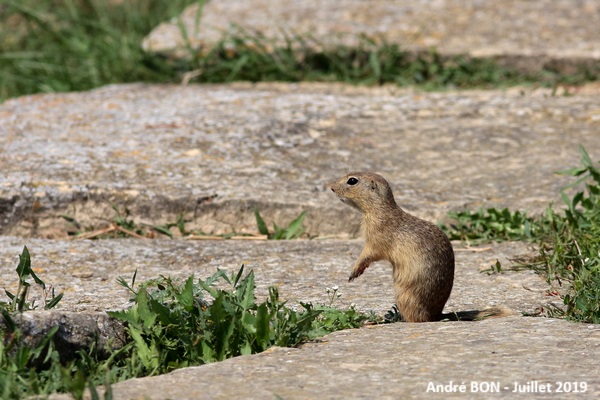
|
The ancient Greek city of Histria was long abandoned by its inhabitants. This is not entirely true because we have been able to see that it is currently inhabited by a small colony of European Sousliks. |
| [To know more about the European Ground Squirrel] [Next picture] [Previous picture] [Top] |

|
European Souslik surprised during its meal. |
| [To know more about the European Ground Squirrel] [Next picture] [Previous picture] [Top] |
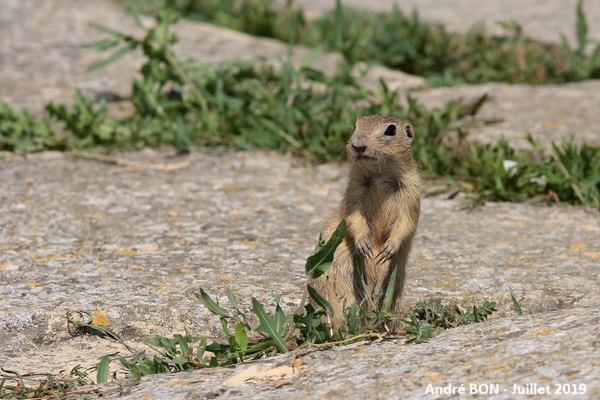
|
This photo shows the sharp claws that European Sousliks use to dig their burrows. |
| [To know more about the European Ground Squirrel] [Previous picture] [Top] |
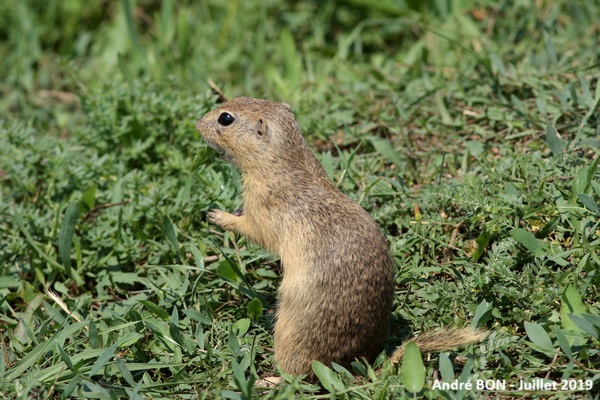
|
The Romanian European Sousliks were less shy than their Hungarian cousins. |